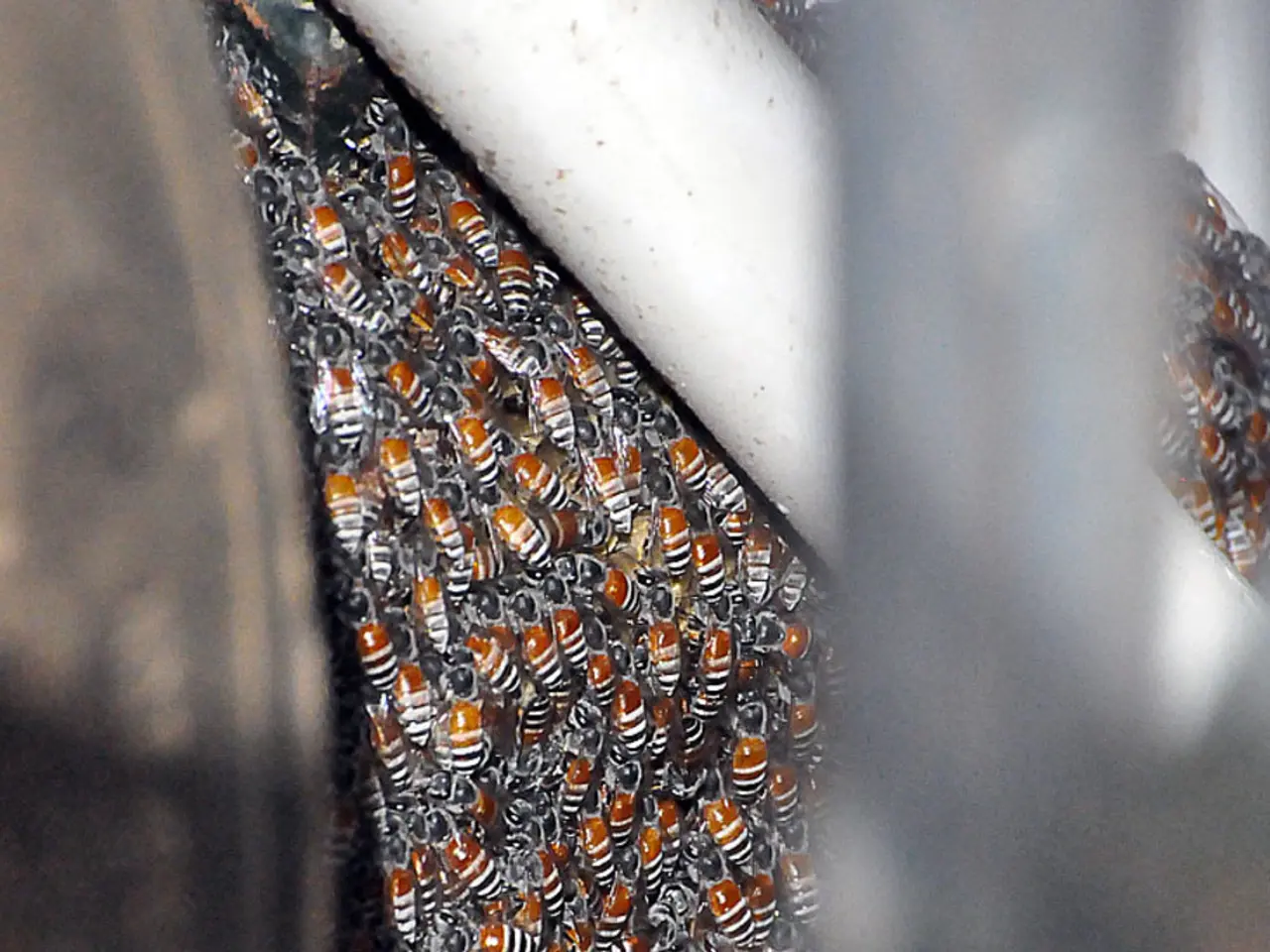Wax Moths Thwarted by Bumblebee Colonies' Social Distancing Approach in Nature
In a recent study, researchers have found that the physical distance between bumblebee colonies and honeybee apiaries plays a significant role in protecting bumblebee colonies from wax moth infestations.
The study, conducted in Latvia, involved placing 25 boxed bumblebee colonies at varying distances from six apiaries. The findings underscored the importance of strategic hive placement to protect bumblebee colonies.
Researchers found that bumblebee colonies located farther from honeybee apiaries experienced lower infestation rates. This relationship likely arises because honeybee apiaries serve as sources or facilitative environments for wax moths, which can then spread to nearby bumblebee nests.
Wax moth larvae, known pests that damage the wax combs, consume wax cells, pollen, nectar, and living host larvae, causing severe damage to colonies. Heavy infestations can lead to colony collapse or abandonment, posing a serious risk to bumblebee populations under stress from habitat loss and climate change.
The study also found that colonies closer to apiaries showed weaker immune responses and reduced reproductive output, suggesting a protective effect of physical distance.
By maintaining adequate distance between honeybee and bumblebee hives, beekeepers can reduce the risk of parasite spillover and support the health and productivity of bumblebee populations. This approach is particularly important given the global decline of pollinators.
The findings on hive spacing's protective effect against wax moth infestations are significant for the survival of bumblebee populations. However, the long-term effects of hive spacing on bumblebee colonies are yet to be fully understood.
Researchers are currently investigating additional factors, such as habitat quality and pesticide exposure, that influence bumblebee resilience against parasites. Exploring other strategies to safeguard bumblebee populations is a focus of future research.
Preserving bumblebee populations is crucial for maintaining their essential role in pollination and ecosystem health. The implications for conservation include maintaining adequate physical separation between honeybee apiaries and bumblebee colonies to reduce wax moth infestations in the latter. Conservation and beekeeping practices should consider spatial planning to minimize pest spillover effects from honeybees (a managed species) to wild or semi-managed pollinators such as bumblebees.
In summary, increasing distance between apiaries and bumblebee colonies can reduce wax moth pest pressure on bumblebees, a finding important for designing apiary placement and conservation strategies to safeguard pollinator diversity.
- The study in Lativa highlighted the significance of the strategic placement of hives, specifically in maintaining a distance between honeybee and bumblebee colonies, to safeguard bumblebees from wax moth infestations.
- Researchers are investigating additional factors that may impact bumblebee resilience against parasites, such as habitat quality and pesticide exposure.
- To minimize pest spillover effects from honeybees (a managed species) to wild or semi-managed pollinators like bumblebees, conservation and beekeeping practices should consider spatial planning.
- The implications for conservation extend to maintaining adequate physical separation between honeybee apiaries and bumblebee colonies as a potential strategy to reduce wax moth infestations, contributing to the preservation of bumblebee populations and pollinator diversity.




